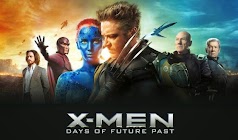Simon Cowell says that "Mack the Knife" is the best song ever written. High praise indeed. It's a translation of a German song written by Bertolt Brecht in 1928. It was a number one hit for Bobby Darin in 1959 on both sides of the Atlantic. This film features two versions of the song: the original version sung by Bertolt Brecht and Bobby Darin's version. My friends who understand German will see that it's very loosely translated.
Mack the Knife, 1959
Oh the shark, babe, has such teeth, dear,
And he shows them, pearly white.
Just a jackknife has old Macheath, babe,
And he keeps it out of sight.
You know when that shark bites with his teeth, babe,
Scarlet billows start to spread.
Fancy gloves, though, wears old Macheath, babe,
So there's never, never a trace of red.
Now on the side walk, Sunday morning,
Lies a body just oozing life. Eek!
And someone's sneaking round the corner.
Could that someone be Mack the Knife?
There's a tugboat down by the river - don't you know? -
Where a cement bag's just a drooping on down.
That cement is just there for the weight, dear.
Five'll get ya ten, old Mackie's back in town
Now did you hear about Louie Miller?
He disappeared, babe, after drawing out all his hard earned cash,
And now Macheath spends just like a sailor.
Could it be our boy's done something rash?
Now, Jenny Diver, Suky Tawdry,
Miss Lotte Lenya and old Lucy Brown,
Oh the line forms on the right, babe,
Now that Mackie's back in town.
I said, Jenny Diver, Suky Tawdry,
Miss Lotte Lenya and old Lucy Brown,
Yes, that line forms on the right, babe,
Now that Mackie's back in town.
Look out, old Mackie is back!
Click here to hear the song sung by Bobby Darin.
Die Moritat von Mackie Messer, 1928
Und der Haifisch, der hat Zähne,
und die trägt er im Gesicht,
und Macheath, der hat ein Messer,
doch das Messer sieht man nicht.
An einem schönen blauen Sonntag
liegt ein toter Mann am Strand,
und ein Mensch geht um die Ecke,
den man Mackie Messer nennt.
Und Schmul Meier bleibt verschwunden
und so mancher reiche Mann,
und sein Geld hat Mackie Messer,
dem man nichts beweisen kann.
Jenny Towler ward gefunden
mit einem Messer in der Brust,
und am Kai geht Mackie Messer,
der von allem nichts gewusst.
Und das große Feuer in Soho,
sieben Kinder und ein Greis,
in der Menge Mackie Messer, den
man nichts fragt, und der nichts weiß.
Und die minderjährige Witwe,
deren Namen jeder weiß,
wachte auf und war geschändet.
Mackie, welches war dein Preis?
Click here to hear the song sung by Bertolt Brecht.
The Bobby Darin version is more modern and has a snappy beat to it, but from a poetic point of view the original version is better. It's difficult to translate songs.
 |
Order from Amazon.com |
| Order from Amazon.co.uk | |
| Order from Amazon.de |





.jpg)

.jpg)


.jpg)




















.jpg)



.jpg)


.jpg)
.jpg)
.jpg)
.jpg)

.jpg)
.jpg)

.jpg)
.jpg)





